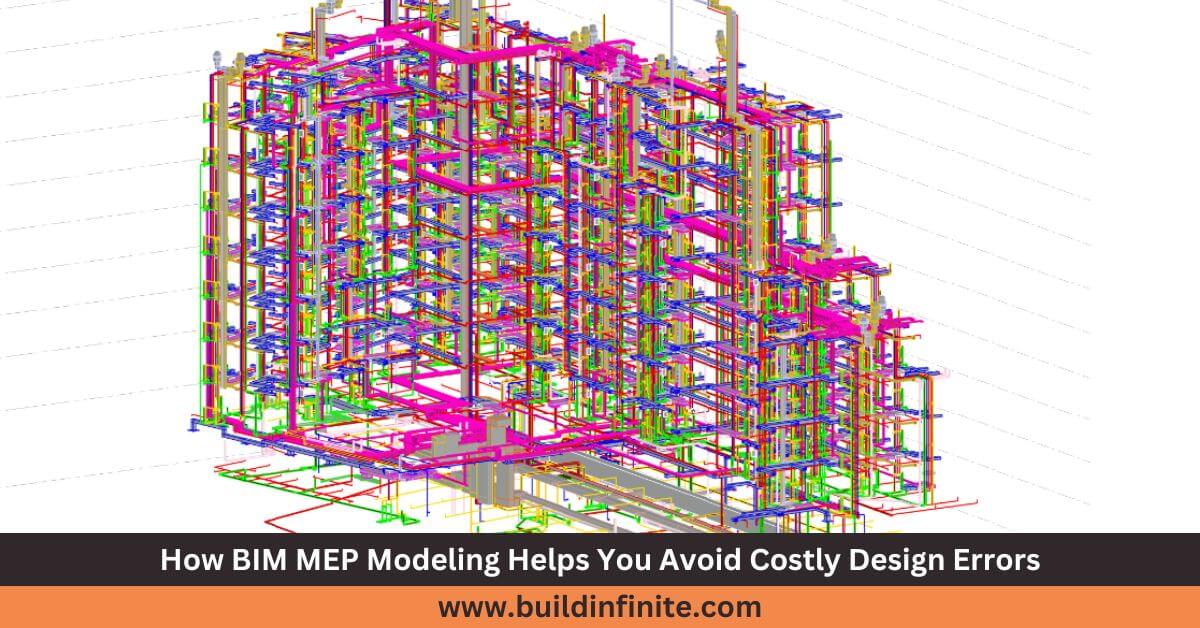Table of Contents
ToggleIntroduction
In modern construction, the margin for error has never been smaller. Deadlines are tighter, building codes are more stringent, and the coordination among trades is more complex.
For MEP (Mechanical, Electrical, Plumbing) contractors, ensuring that every duct, pipe, and cable is correctly placed and routed is crucial, not just for operational efficiency, but also for the overall success of the project. This is where HVAC Drawing Services for MEP Contractors become indispensable.
These technical services are more than just a collection of diagrams. They are the backbone of an effective mechanical design and installation process. With the right HVAC drawings, contractors gain clarity, precision, and the ability to execute complex HVAC systems without on-site guesswork or costly rework.
This blog examines how HVAC Drawing Services for MEP contractors enhance project delivery and mitigate risks.
What Are HVAC Drawing Services
HVAC Drawing Services refer to a set of professional drafting and design solutions that visually communicate how heating, ventilation, and air conditioning systems will be installed within a building. These drawings are not generic; they are specifically tailored to each project’s architecture, scale, and regulatory requirements.
These services typically include 2D layouts and 3D BIM models that define the routing of ductwork, placement of air handling units, positioning of diffusers and return grilles, equipment schedules, and airflow details. Importantly, these drawings ensure that HVAC systems integrate seamlessly with electrical conduits, plumbing pipes, and structural elements.
For MEP contractors, HVAC drawing services are essential tools that eliminate ambiguity during installation. When HVAC drawings are detailed and code-compliant, they serve as the single source of truth that site teams, consultants, and inspectors can rely on.
Importance of HVAC Drawings for MEP Contractors
The demand for high-efficiency buildings has led to increasingly sophisticated MEP systems. As a result, the coordination of these systems has become significantly more challenging.
MEP contractors are now expected to deliver flawless results under tighter schedules and rising expectations from clients, consultants, and authorities.
HVAC Drawing Services for MEP Contractors provide the clarity needed to meet these expectations. These services ensure that HVAC systems are designed not only for performance but also for spatial efficiency, constructability, and compliance.
For Example, in High-rise Buildings or Hospitals – where space constraints and regulations are stringent—HVAC systems must be installed with millimeter-level precision.
Without detailed drawings, contractors risk installing systems that conflict with structural elements or other services, which can lead to change orders, project delays, and legal liabilities.
Moreover, many projects today are executed using fast-track methods, where design and construction happen concurrently. In such environments, HVAC drawings must be continuously updated and refined.
Working with a reliable HVAC drawing service ensures that MEP contractors can keep pace with project changes without compromising accuracy or safety.
What is Included in HVAC Drawing Services
The term “HVAC drawing services” encompasses a wide range of deliverables, each suited for a particular phase of the project lifecycle. Let’s look at these in more detail:
Design Drawings
Design drawings are the initial set of documents developed during the conceptual or schematic design phase. They outline general HVAC zoning, duct routing paths, and central equipment placement. While not detailed enough for installation, these drawings are essential for stakeholder buy-in and early-stage coordination.
Design drawings also support preliminary cost estimation, helping contractors prepare accurate bids and foresee challenges early.
Construction Drawings
Construction drawings (also called working drawings) provide all the necessary details for the on-site installation of HVAC systems. They include duct sizes, insulation specifications, airflow rates, control wiring, and zoning layouts.
The drawings must comply with local codes and often form part of the documentation submitted to regulatory authorities for approval.
Construction drawings are critical for field crews – they serve as the final instruction manual for installing HVAC systems efficiently and safely.
Shop Drawings
Mechanical shop drawings offer even greater detail, often breaking down each duct or pipe segment into fabrication-ready units. These are created by subcontractors or HVAC vendors and used to pre-fabricate system components off-site, saving time on-site and improving quality control.
Shop drawings include data such as part numbers, connection details, and installation instructions, and consultants review them before execution.
As-Built Drawings
As-built drawings are updated versions of construction drawings that reflect what was actually installed, including any field modifications. These are essential for future maintenance, troubleshooting, and system upgrades. MEP contractors hand over these documents to building owners at project completion.
MEP Coordination Drawings
Perhaps the most valuable in multi-trade environments, MEP coordination drawings integrate HVAC systems with electrical, plumbing, and fire protection drawings. They resolve spatial conflicts through 3D modeling and digital clash detection, preventing on-site disputes and installation delays.
Using software like Revit or Navisworks, these drawings allow all trades to collaborate effectively and maintain their installation sequences.
Also Read, Why Ductwork Shop Drawings in HVAC Projects Are Critical
The HVAC Drawing Workflow
The process behind HVAC drawing services is systematic and collaborative, ensuring that the final outputs are both technically accurate and practically feasible. Here’s how it typically unfolds:
- Review of Project Plans and Requirements: The service provider begins by collecting all architectural, structural, and design documentation. This helps in understanding ceiling heights, room layouts, mechanical zones, and access requirements.
- Drafting Initial HVAC Layouts: Engineers then create schematic layouts, identifying equipment locations, duct routes, and airflow paths. These are reviewed and refined with the contractor’s input.
- Coordination with Other Trades: Using BIM and clash detection tools, the HVAC layout is compared with plumbing, electrical, and structural drawings to avoid interference. Adjustments are made to optimize space and prevent delays during execution.
- Finalization and Quality Check: Once coordination is complete, the drawings go through internal QA to ensure they meet codes, standards, and client expectations. Documentation is then formatted for submission, printing, or digital use.
- Ongoing Updates and Revisions: Throughout construction, drawings may need updates to reflect design changes or field conditions. A professional drawing partner offers revision support to ensure drawings remain current.
Key Benefits of HVAC Drawings for MEP Contractors
Let’s explore in detail how HVAC Drawing Services for MEP Contractors provide value throughout the construction lifecycle:
1. Improved Coordination and Conflict Avoidance
By visualizing HVAC systems in the context of a complete building model, coordination drawings help contractors anticipate and resolve conflicts before they happen. This reduces project risk, especially in buildings with dense service networks.
2. Time and Cost Efficiency
Accurate drawings support off-site prefabrication, reduce material wastage, and eliminate trial-and-error during installation. This leads to faster project delivery and reduced labour costs.
3. Better Communication Across Teams
Drawings act as a universal language between engineers, site crews, project managers, and consultants. With detailed, clearly labelled documents, everyone knows what to install, where, and how.
4. Enhanced Regulatory Compliance
Professional HVAC drawings ensure systems meet fire safety, ventilation, and energy-efficiency codes. This streamlines inspections and avoids the need for costly redesigns or retrofits.
5. Simplified Maintenance and Facility Management
As-built HVAC drawings offer lasting value to building owners and maintenance teams. They provide insights into component locations, access points, and operational details, making repairs and upgrades faster and safer.
How Technology Is Transforming HVAC Drawing Services
The field of HVAC drawing has evolved dramatically with advancements in CAD and BIM technologies. Today, drawing services are delivered using intelligent 3D models, not just 2D blueprints.
- Revit MEP allows the creation of data-rich HVAC models that automatically generate schedules, detect clashes, and simulate energy usage.
- Navisworks supports clash detection and multi-trade coordination in a shared digital environment.
- AutoCAD MEP remains a staple for 2D drafting and detailing, where simplicity is preferred.
Described tools also enable remote collaboration, version control, and seamless integration with project management platforms. For MEP contractors, working with a drawing partner who is tech-savvy ensures smoother coordination and fewer errors on-site.
When Should Contractors Outsource HVAC Drawing Services
While some large MEP firms maintain in-house drafting teams, outsourcing offers a cost-effective, scalable solution, especially for firms that handle variable workloads or complex projects.
Outsourcing is ideal when:
- Project timelines are tight
- Internal resources are stretched thin
- The project requires BIM integration or specialty documentation
- You need quick revisions or multiple iterations
- Local code expertise is required
Partnering with a drawing firm specializing in HVAC Drawing Services for MEP Contractors allows you to focus on field execution while experts handle documentation with accuracy and speed.
Also Read, Why Plumbing Shop Drawings for Builders
Final Thoughts
Construction is a high-stakes industry where minor errors can lead to significant consequences. For MEP contractors, detailed and accurate HVAC drawings are a vital safeguard against project overruns, rework, and compliance failures.
HVAC Drawing Services for MEP Contractors offer a powerful way to ensure your mechanical systems are designed correctly, coordinated flawlessly, and installed efficiently.
From schematic layouts to detailed shop drawings and clash-free MEP coordination models, these services empower contractors to deliver high-quality work that meets all expectations – technical, regulatory, and commercial.
In an era where precision is power, professional HVAC drawing services are not just supported – they are a strategic advantage.




